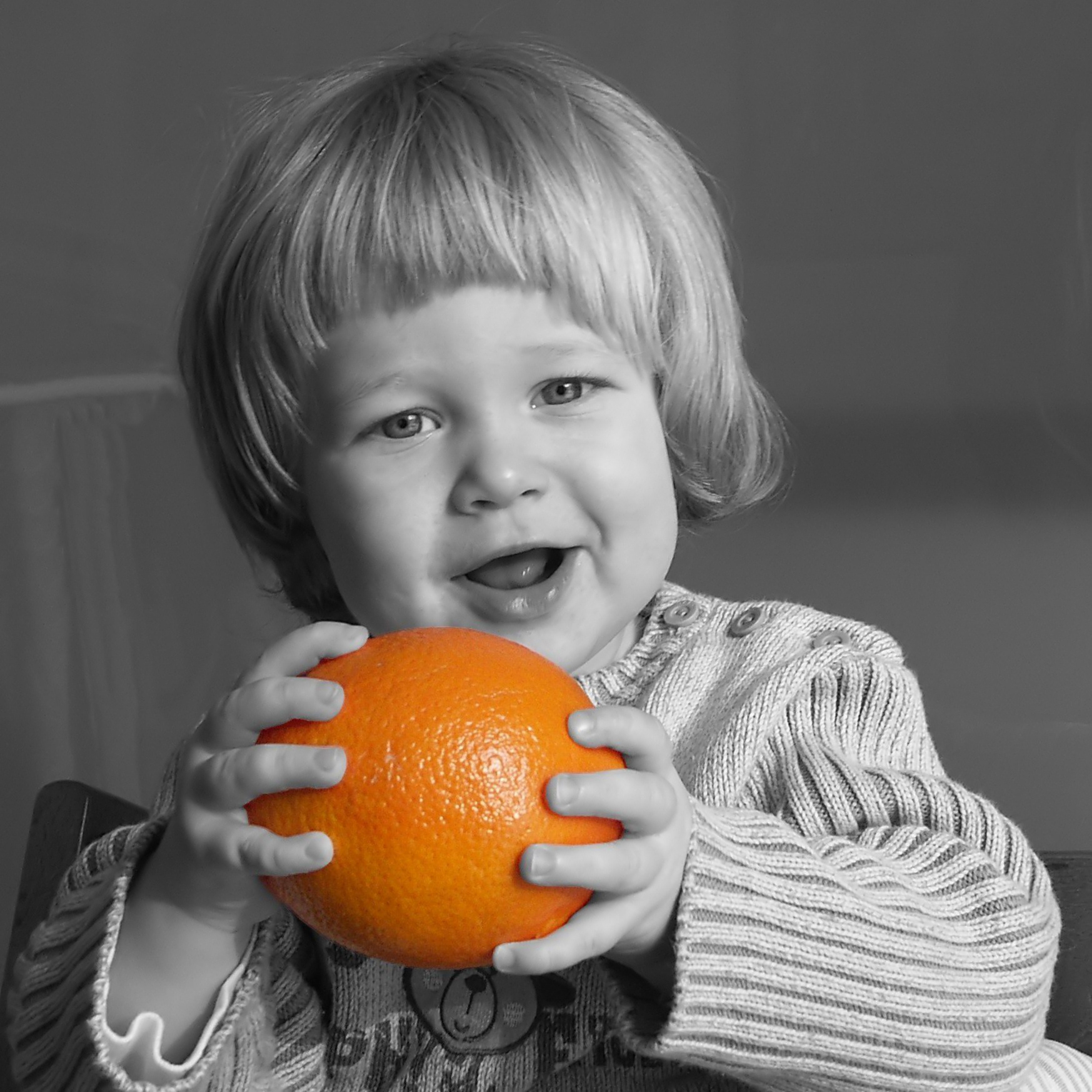Have you considered what a wondrous thing a piece of fruit is? A vivid, individually-wrapped gift of deliciousness from the world to you. It's like a perfectly packed one-portion lunch from Mother Nature.
Think of an orange, for example. The colour, firstly: is there anything happier than the colour orange? Vibrant, intense, the colour of the sun; of life itself. It's the dead of winter, the sun barely comes up for weeks on end, but there in my fruit bowl are these concentrated colour bombs, bringing the exotic scents and flavours of Morocco into my kitchen. Inside the protective peel, there are segments of juiciness, also wrapped. Why are there segments? They are bite-sized, shaped to fit the human mouth. They must be made for us. And the process itself of peeling and de-pithing is soothing. I have spent cumulative hours at the lunch table enjoying therapeutic me-time with my oranges.
Bananas! Bananas don't have segments, and this is convenient: because when you're standing on a start line of a race, or midway through a long run, you don't want to involve both hands in the eating process. Bananas are the perfect multi-task-able fruit; an energy bar in a happy wrap. And yet the peel is strong enough to safely deliver the nutritious squashiness all the way from the Dominican Republic to the back pocket of your sweaty shorts for three hours.
Mangos are fascinating. A mango is such a regal fruit that it deserves your time and respect. You don't throw a mango into your handbag and eat it at your desk. It would surely deliver some sort of retribution if you did that. But if you take the time to share a mango's journey, patiently waiting for it to ripen, and preparing it with care and attention, you are deeply rewarded. Mango lassis, mango smoothies, mango salad, decadent naked mango with a spoon. Even the stone is worth spending time on. I've spent many an intimate moment standing with my head in the sink and my face in a sticky mango stone.
I could go on all day, listing my favourite fruits. I haven't even mentioned the nutritious, anti-oxidant properties of fruit: this is widely known. But consider a piece of fruit the next time you have one. Where has it travelled from? What colour is it? How does it grow; what does its tree look like? Is preparing and eating it an interactive, thoughtful process, or an on-the-go job? Consider how lucky we are to have such exotic fruits delivered to us from all over the world.
 |
| Photo by Böhringer Friedrich (WikiCommons) |
Think of an orange, for example. The colour, firstly: is there anything happier than the colour orange? Vibrant, intense, the colour of the sun; of life itself. It's the dead of winter, the sun barely comes up for weeks on end, but there in my fruit bowl are these concentrated colour bombs, bringing the exotic scents and flavours of Morocco into my kitchen. Inside the protective peel, there are segments of juiciness, also wrapped. Why are there segments? They are bite-sized, shaped to fit the human mouth. They must be made for us. And the process itself of peeling and de-pithing is soothing. I have spent cumulative hours at the lunch table enjoying therapeutic me-time with my oranges.
Bananas! Bananas don't have segments, and this is convenient: because when you're standing on a start line of a race, or midway through a long run, you don't want to involve both hands in the eating process. Bananas are the perfect multi-task-able fruit; an energy bar in a happy wrap. And yet the peel is strong enough to safely deliver the nutritious squashiness all the way from the Dominican Republic to the back pocket of your sweaty shorts for three hours.
Mangos are fascinating. A mango is such a regal fruit that it deserves your time and respect. You don't throw a mango into your handbag and eat it at your desk. It would surely deliver some sort of retribution if you did that. But if you take the time to share a mango's journey, patiently waiting for it to ripen, and preparing it with care and attention, you are deeply rewarded. Mango lassis, mango smoothies, mango salad, decadent naked mango with a spoon. Even the stone is worth spending time on. I've spent many an intimate moment standing with my head in the sink and my face in a sticky mango stone.
I could go on all day, listing my favourite fruits. I haven't even mentioned the nutritious, anti-oxidant properties of fruit: this is widely known. But consider a piece of fruit the next time you have one. Where has it travelled from? What colour is it? How does it grow; what does its tree look like? Is preparing and eating it an interactive, thoughtful process, or an on-the-go job? Consider how lucky we are to have such exotic fruits delivered to us from all over the world.
Comments
Post a Comment